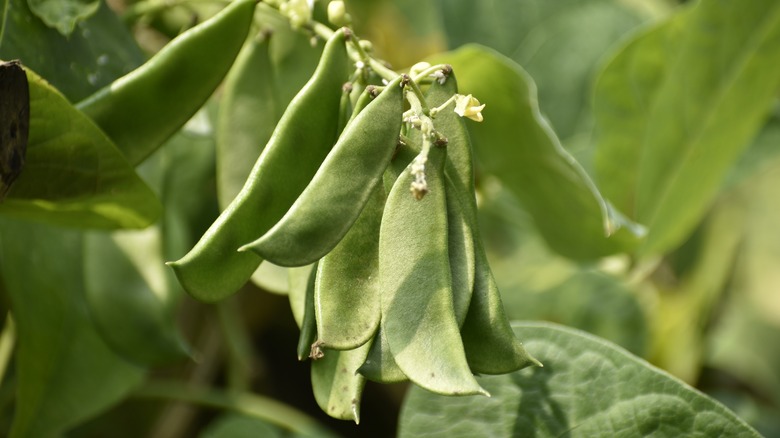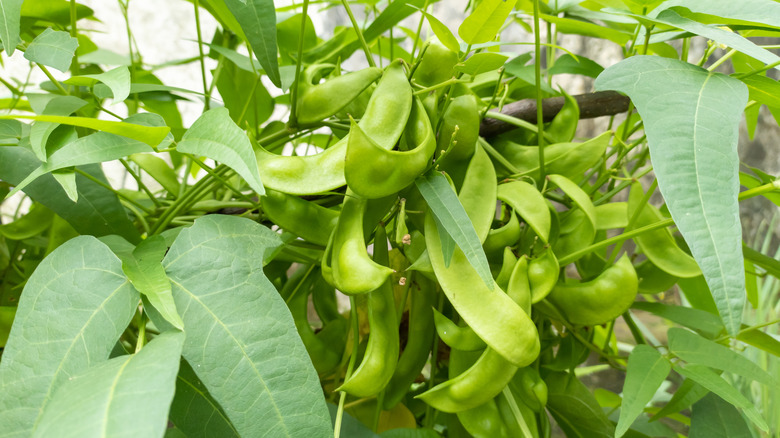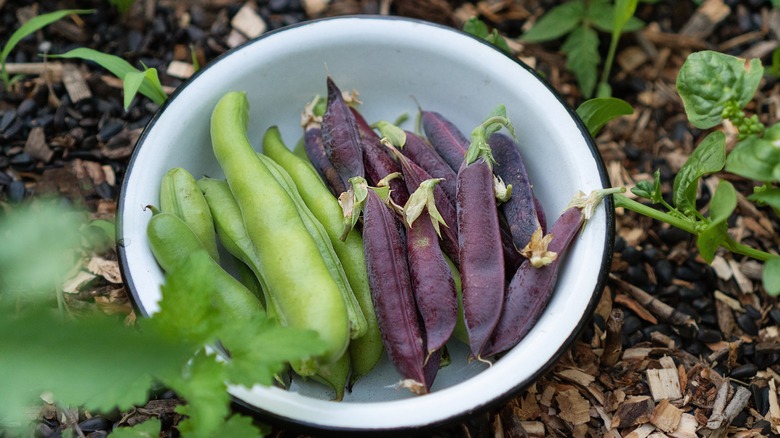Growing Lima Beans Is Easy With These Gardening Tips
Perhaps the last time you got a really good look at lima beans was in elementary school. Once the popular bean for science class experiments, it may have faded from memory until now. If you're an avid gardener, though, this is your sign that it might be time to get reacquainted with the humble lima bean. This tasty and low-maintenance plant is the perfect addition to any garden, even if you're still working on that green thumb, as it's one type of bean plant that's particularly easy to grow.
Lima beans have been a longstanding favorite across several cultures from Latin America to the American South. They have played a crucial role in the three sisters Indigenous American companion planting method, which focused on planting squash, lima beans, and corn — which pole varieties would climb the stalks of. Today, lima beans are still beloved in all types of dishes, so don't dismiss them as mere fodder for grade school experiments. Here's what you need to know about growing lima beans and some tips to ensure your legumes remain healthy and capable of producing edible beans.
How and when to plant lima beans
Before you grab your trowel, take a scan of the garden space available to you and what kind of yield you're after. Pole and bush are the two types of lima beans to choose from. Similar to how their names sound, pole varieties grow upwards and need support, whereas bush varieties need no such vertical crutches and instead stay lower to the ground. You can expect a larger yield from pole lima beans, but they take about two weeks longer to produce beans than bush types. Once you've weighed up which is best, you can acquire the seeds and get digging.
To start the planting process, make sure your seeds have warm soil. That means the best month to plant lima beans depends fully on when your area gets its last frost. Once you know this date, aim to plant them two weeks after. These legumes appreciate weekly waterings and warmer temperatures as they grow, too, although no warmer than 80 degrees Fahrenheit. Extreme cold, heat, and wet can influence their survival and production, so be mindful of the usual weather conditions in your area or zone. If all goes according to plan, two to three months after planting, you can expect to start picking beans. Harvesting season varies based on where you're located, but it can stretch from August to October.
Support the healthy growth of lima beans while thwarting pests
To ensure your lima bean plants thrive and give you the best possible chance of tasty beans and a bountiful harvest, keep these tips in mind. First, like some other types of beans, pole lima beans are climbers. Therefore, giving this variety of lima bean some support is essential. This could be a trellis or pole that gives their vines a chance to crawl, creep upwards, and spread out. Another way to better support your plants is to start cultivation indoors. If you tend to get colder temperatures late into spring, you can start the seedlings of these plants inside — which is a helpful headstart while you're waiting for warm weather to arrive.
Unfortunately, some pests like the look of lima beans, too. Aphids and stink bugs are among the top concerns for this plant, leading to lasting damage not just for one part of the plant but all of it. Luckily, there are kitchen ingredients that will solve your stink bug problem, such as pepper, and keep them away for good. There is also a disease called bacterial blight, which lima beans tend to suffer from. An onslaught of cold, rainy conditions can ignite this problem. Choosing certified disease-free seeds or resistant varieties can help ward off bacterial blight, as can implementing other preventative measures, such as crop rotation practices and copper fungicides. Following these tips and their care requirements will lead to happy, healthy plants.


